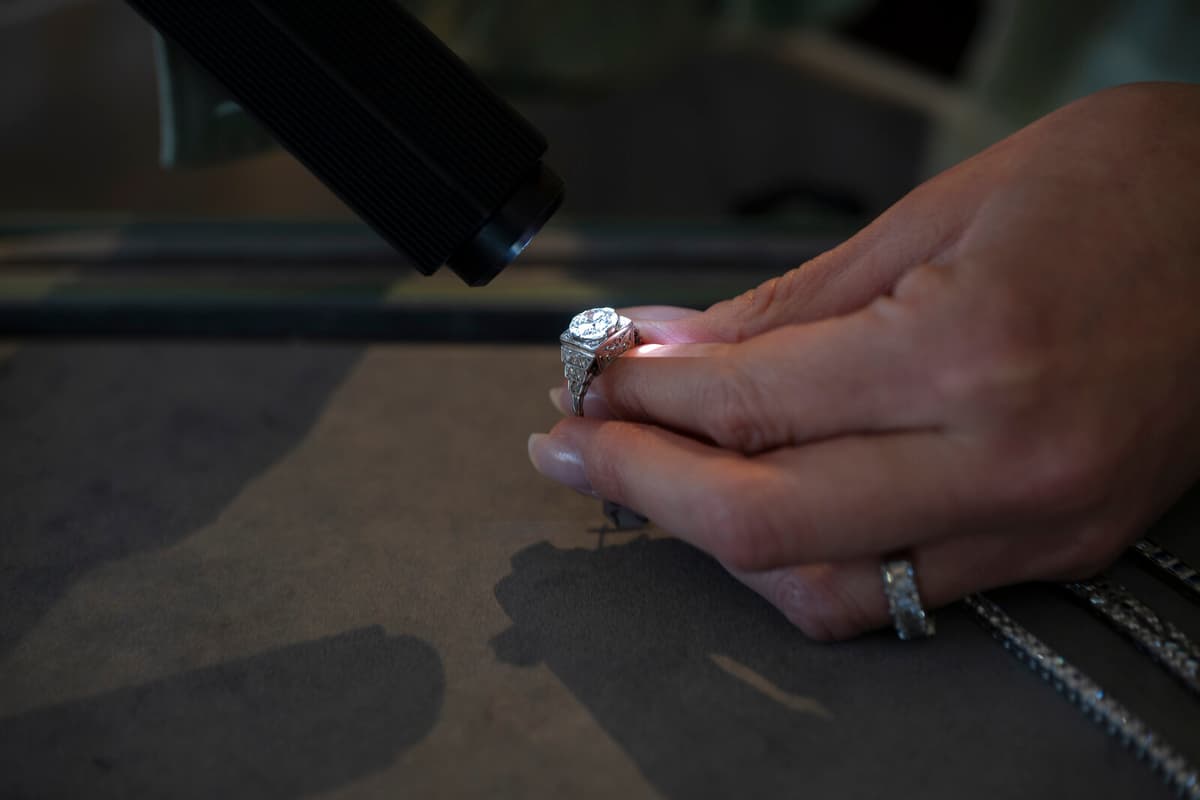Diamonds produced in laboratories have long been used in industry, but also in jewelry. As the jewelry has become increasingly popular, the traditional part of the industry has become increasingly concerned.
There is nothing wrong with the synthetic diamond, emphasizes Lena Carlsson, CEO of the industry organization Jewelry & Watches.
One can sell and buy what one wants, but for the consumer.
She has also reacted to the prices of diamonds that are relatively cheap to produce. Now, industry organizations have begun to report to the Consumer Agency when they see synthetic diamonds being sold without it being clear that they were produced.
If you want to buy a synthetic, it's okay, but you should know what you're paying for. We found 36 inaccuracies in an ad.
Prefer lab-grown
Anna Wallander, CEO of Akind, chooses to use the term "lab-grown" for the diamonds used in the company's jewelry.
- It's important to be transparent and clear to the customer about what they're buying and the origin of the diamond. We have chosen to only work with lab-grown diamonds because we want to offer a sustainable alternative to a mined diamond.
A lab-grown diamond is a real diamond, she emphasizes.
I'm not just saying that because I think so, but it's based on facts. It has the same chemical, physical, and optical properties as a mined diamond and is structurally built in the same way.
The world's leading gemological laboratories, GIA (Gemological Institute of America) and IGI (International Gemological Institute), which certify and grade 80 percent of the world's diamonds, also confirm that lab-grown diamonds are real diamonds.
A lab-grown diamond is in principle impossible to distinguish from a natural one with the naked eye, but an experienced gemologist or jeweler with verification instruments can see the difference. Therefore, it may happen that uninformed buyers only find out what kind of diamond it is when they try to sell it, says Lena Carlsson.
Many auction houses do not accept synthetic diamonds, but only give the metal value. Several insurance companies do not want to compensate for synthetic products.
The market has changed, Anna Wallander believes.
Most people who buy a diamond ring today probably don't buy it as an investment, but rather because it's the ring they want to have. I think a diamond ring, regardless of origin, should not be seen as a financial investment. It's the personal and emotional value that should be central.
Energy-intensive production
A lab-grown diamond is produced by copying the diamond's natural growth pattern. There are two methods, one is called HPHT – high pressure, high temperature, and the other production method is called CVD – chemical vapor deposition.
They are often sold with the argument that they are environmentally friendly, but the production is enormously energy-intensive, according to Lena Carlsson.
Starting the process is like starting 400 microwave ovens at maximum effect. And to produce them, other minerals are needed, such as cobalt.
IGI states on its website that lab-grown diamonds are not automatically environmentally friendly. The process is energy-intensive and often dependent on fossil fuels. But there are also manufacturers that use renewable energy and opportunities to choose a green alternative.
The mining behind the natural diamonds is not without environmental impact. So-called conflict diamonds that have been used by militia groups to finance warfare have also previously been a problem for the industry.
To get a grip on the problem, the Kimberly process was established in 2003 – the diamond-producing countries' own guidelines for controlling that illegally mined diamonds do not enter the market. But critics argue that it has too many flaws and loopholes.
The Kimberly process is based on governments certifying where the diamonds come from. There are problems with corruption and bribery, and no incentive for them to report on conflicts and human rights violations. Another problem is that it does not cover environmental impact or human rights violations, says Benjamin Cleason on Swedwatch.
Not enough
One thing that has made diamonds so coveted is that there are so few. It is often said that there are actually diamonds enough for everyone, but that the industry holds onto them to drive up prices. It is a truth with modification, explains Lisa Levisson on UK Diamond Council. Yes, they would be enough – but only if you can imagine any diamond at all.
Of the raw diamond, all qualities, you find a few cubic meters per year. Most of them cannot be cut and go to industry, to drills and saw blades.
Those that are left, cut diamonds in all sizes, correspond to less than one cubic meter. Looking at diamonds that are one carat or larger, the amount corresponds to half a cubic meter.
Nature gives what nature gives. There are, like, no spare ones.
Diamonds are formed in the earth's mantle, at depths greater than 150 kilometers.
As early as the 3rd century BC, India traded with diamonds. They were believed to have magical properties and were a symbol of courage and masculinity.
The Middle Ages lost their significance, but when cutting technology improved in the 15th century, they came back into fashion.
The largest diamond ever found is the Cullinan diamond, which was 3,106 carats in uncut condition. The stones that were extracted from it are called "Africa's stars" and are part of the British crown jewels and royal British jewelry.
The British royal family also owns the famous Indian diamond Koh-i-noor.
Other famous diamonds are the Orlov diamond in the Russian imperial crown, the Regent diamond, the Sancy diamond, and the blue Hope diamond, which belonged to the French crown jewels.
The weight of diamonds is measured in carats, or metric carats. One carat corresponds to 0.2 grams.
Source: ne:se





